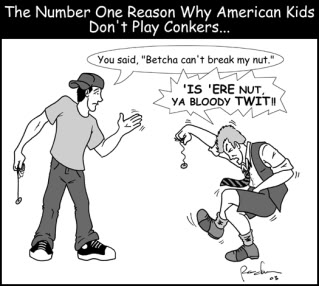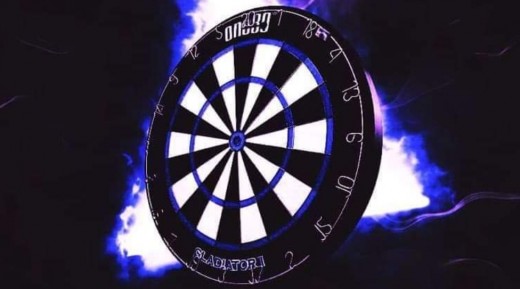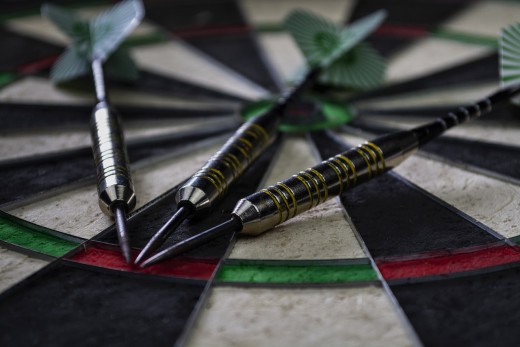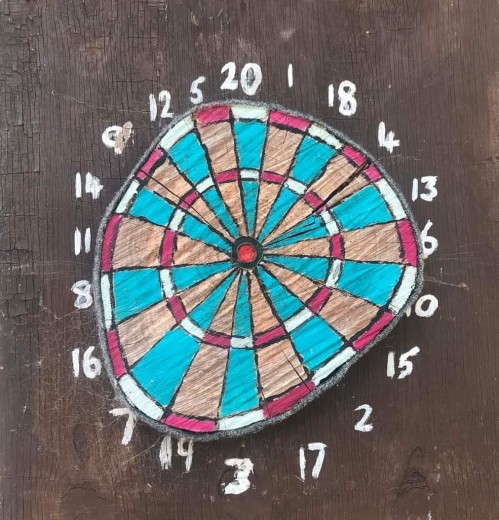November 1, 2003
Column 150
They Played Conkers, not Darts!
Something like four hundred years ago a small group English people hopped into a boat.
You’ve probably heard about it.
They sailed all the way to Cape Cod to have Thanksgiving dinner with our Indians before converting them to the Christian Faith and then killing them.
It was a tumultuous time in the history of both old England and young America. It was a time that gave birth to the familiar schoolyard riddle…
If April showers bring May flowers what do May flowers bring?
Of course, the answer is: ALLERGIES!
And Pilgrims.
Some would have us believe that this was also the moment the sport of darts took root in America. It has been written and often repeated that the Pilgrims “amused themselves by playing darts” aboard the Mayflower.
Romantic as it may sound, this myth has recently been debunked by American author Dan Peek and British darts historian Patrick Chaplin. Both have dug deep into the dusty annals of history and proclaimed: “THE ANNALS ARE DUSTY!”
The Pilgrims did not set up a dartboard on the bow of the Mayflower to wile away the hours as they traveled to the New World.
What they did was play conkers.
Now, if you’re an American you are probably scratching your head and muttering to yourself: “Conkers? What the fuck is that?” If you’re British you are most certainly saying: Bloody ‘ell!! They played conkers on the Mayflower!!”
In fact, if you’re British, this may well be the most exciting news ever to come your way.
Outside of England (and as you’ll soon learn — entirely by British design), it is a little known fact that conkers — not darts — is the real national sport of the land. Every September and October for generations the activity has taken over schoolyards across the country. It all culminates on the second Sunday of each October in the Village at Ashton in Northamptonshire where contestants gather to battle it out for the Conker Championship of the World.
A conker is the hard brown seed found inside the prickly green casings that fall each autumn from the horse chestnut tree. The same thing actually happens here in America but we call the tree and the seeds buckeyes. We named a whole state after them. People from Ann Arbor drill screws into the nuts and wear them as accessories at football games in Columbus. Americans can be so uncivilized.
It’s much different in England. They are a class act.
What the Brits do is collect the nuts from the ground, carefully drill holes through them and thread the nuts on lengths of string. Two contestants then pair off like gladiators, just as in darts. One suspends his conker from one hand, to a length of approximately a foot, while the other contestant (the striker) attempts, by swinging his conker, after wrapping his string tightly around his hand, to break his opponent’s conker to smithereens with a single blow. If he succeeds he wins the contest.
If not, the positions are reversed and the first contestant assumes the role of striker and attempts to break his opponent’s conker. The positions are repeatedly reversed until someone completely destroys the other’s nut.
But there’s more to it than this. If a striker’s first shot misses he is allowed up to two additional turns to score a hit. If the two strings tangle, as they often do, the first player to yell “strings” gets an extra shot. If a player drops his conker the other player can yell “stamps” and jump on it unless (and this is extremely important) the owner yells “no stamps” first, in which case the other player can not squash the nut. It’s all highly technical, just like darts.
What is called a “count” is kept for each conker during the course of its competitive life. For example, a conker that has battled twice and won twice is called a “two-er.” Three wins earns a nut the distinction of “three-er” and so forth. However, if a “two-er” defeats a “three-er” that conker is credited, not just with another win, but with the entire record of the vanquished nut — hence it becomes a “five-er.” Curiously, the concept is very similar to the American Darts Organization’s (ADO) national ranking system.
 Just as in darts, there are varying degrees of quality when it comes to conkers. Just as tungsten outplays brass, it is said that firm, un-cracked and symmetrical nuts are superior to mealy, oddly-shaped ones. And just as flight construction and point selection can play an important role in the performance of a dart, soaking a conker in vinegar, baking it in the oven and then storing it in a dark place for a year is said to harden the nut and impart it with a competitive edge for the next season. Yes, it is all very sophisticated.
Just as in darts, there are varying degrees of quality when it comes to conkers. Just as tungsten outplays brass, it is said that firm, un-cracked and symmetrical nuts are superior to mealy, oddly-shaped ones. And just as flight construction and point selection can play an important role in the performance of a dart, soaking a conker in vinegar, baking it in the oven and then storing it in a dark place for a year is said to harden the nut and impart it with a competitive edge for the next season. Yes, it is all very sophisticated.
But more than that, it is just another example of the brilliance of the British people.
As indisputable as the evidence is that the Pilgrims carried conkers with them to the New World (is a whole frickin’ state full of buckeye trees not proof?) it would seem just as obvious that the Pilgrims made a conscious choice not to take their arrows on the cruise.
The British are a proud people. It only stands to reason that the Pilgrims did not bring their darts because they feared American sports superiority. It is due to this same fear that they buried their nuts in Ohio.
I ask you: name one, just ONE, famous athlete who hails, who has EVER hailed, from jolly old England.
Jim Thorpe? No.
Babe Ruth? Arnold Palmer? Wilt Chamberlain? Muhammad Ali? Mark Spitz? Lance Armstrong?
No. No! NOOOOOO!!!
There aren’t any!
Even the current heavyweight champion of the world is, technically, from Hamilton, Ontario.
This is why blokes like John Alden and Myles Standish didn’t carry their darts on the Mayflower. They were afraid (and they were right) that the Americans would someday take over the sport, just like they rule every other sport on the planet.
This is why the Pilgrims brought their conkers instead and then buried them deep in hinterlands of Ohio. They didn’t want us to get them and come over to their country and kick their children’s asses from moor to shining moor.
So you see, it was all by design. The evidence is flat-out indisputable.
The Pilgrims “amused themselves” with conkers, not darts, on the Mayflower.
Ah, the British are very, very smart indeed.
From the Field,
Dartoid








